Imagine stepping into the shower and feeling the exhilarating rush of hot water cascading over your body, instantly washing away the day’s stresses.
But what if your shower falls short, leaving you with lukewarm water that barely takes the edge off?
Say goodbye to lackluster showers and hello to a steaming hot experience that will invigorate your senses and leave you feeling refreshed and rejuvenated.
In this guide, we’ll delve into the world of plumbing, temperature regulators, and practical solutions that will make your showers feel like a luxurious oasis of warmth.
It’s hard not to love taking hot showers if you’re like me. In some cases, though, the water will remain too cold, no matter how long you wait for it to boil.
Why Is The Shower Water Not Hot Enough?
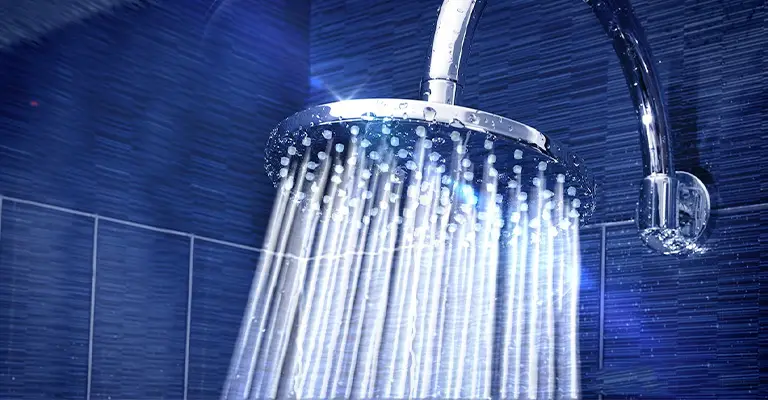
In addition to not being hot enough, shower water temperature problems are also common. Can you tell me where you get your hot water from?
Which type of water heater do you use, a tankless water heater, an electric burner or a gas burner? Can the thermostat be accessed to check that the temperature is set correctly?
Adjusting the thermostat if you are not getting enough hot water is typically helpful. The cold water in your shower might be caused by someone accidentally touching the thermostat. However, the following reasons could be at play if this is not the case.
Several issues might cause your shower water to become too cold, so if you suspect one of these may be the cause, you can troubleshoot it yourself or call a professional for help.
Is Your Thermostat Working Properly?
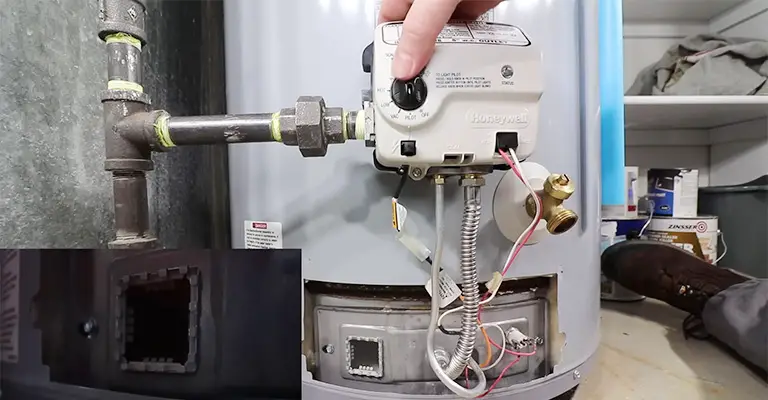
The metal shell of the thermostat mounting area is exposed even though the water heater tank is fully insulated.
By sensing the water’s temperature through a conducting metal contact, the heat-regulating element regulates the water’s temperature.
An alarm is triggered if the reading falls below the set levels. The heaters then fire up if the reading is below the set levels.
Compare the temperature of your shower faucet with the thermostat’s default setting first thing in the morning. It is possible to use this process to determine if the component is still working.
If your thermostat is failing, you may have to repair it or replace it. Handy individuals can attempt a repair or replacement with the right tools. You can also hire a professional to assist you.
Buildup Of Deposits In Your Hot Water Tank
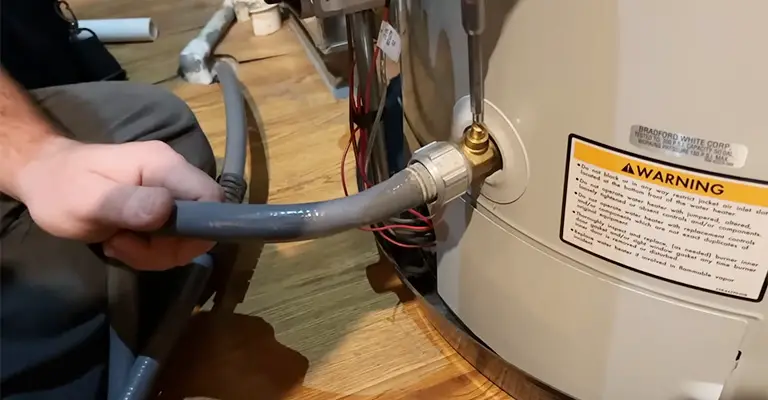
In regular tap water, minerals and salts dissolve in it that can solidify if the temperature fluctuates.
Besides dirt and debris in the water, sediment can form at the bottom of the tank due to dirt and debris. Water heater burners are located here, unfortunately.
You can’t heat your water efficiently because of the sludge at the bottom of the tank. Therefore, the temperature will vary between hot and cold water or remain lukewarm despite your efforts to adjust the heat settings.
It is, therefore, essential to check whether the water heater contains sediment, especially if you use hard water when bathing.
Water Heater Needs Servicing
It is possible that there is an issue with the water heater and it needs to be serviced. A water heater that is not maintained correctly can result in too hot water.
Buildups and blockages in the system can make the water flow less efficiently and cause a drop in temperature.
Maintaining your water heater regularly will ensure that it’s working efficiently and that it’s operating at peak efficiency. To get the best results, schedule an appointment with a professional as soon as possible.
The Water Heater Temperature Is Not Set High Enough
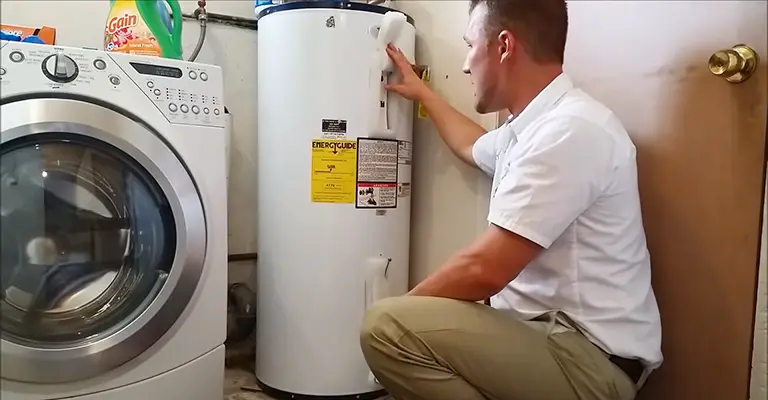
Water heaters aren’t set to a high enough temperature, which is why the water isn’t as hot as you want it. Test this by turning up the thermostat on your water heater and observing how it affects the water’s temperature.
Water Valve Is Turned Off
In addition, the water valve might have been switched off or closed accidentally or intentionally. Your water valve is likely turned off, preventing the flow of hot water, so the water isn’t hot enough.
If you can turn the valve back on, this should solve the problem. It could be necessary to adjust the temperature setting on your water heater if this does not happen.
Clogged Shower Head
Cleaning the shower head might resolve the issue if the shower head is clogged with scale or sediment.
Shower heads that are clogged don’t heat up as efficiently as those that are not. Some of the droplets don’t reach a size where the force of the water can propel them out of the showerhead by their own force.
The results are that the shower head heats up more slowly than it would if the particles could escape, causing the water to not reach the desired temperature.
Rust In The Tank And Pipes
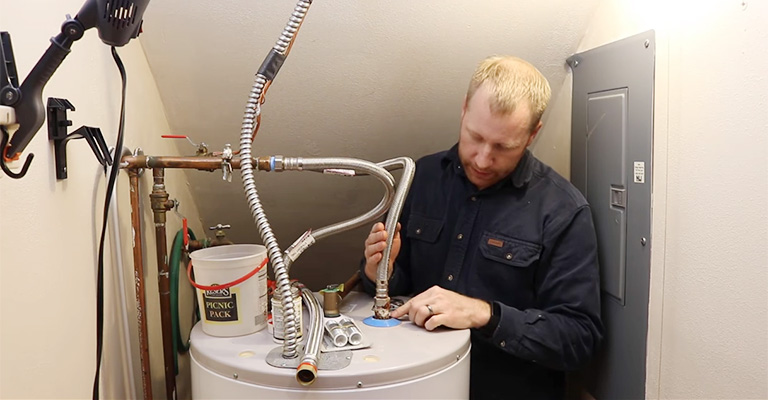
Many issues are associated with hard water, which is heavy in minerals. You may notice leaks in your water heater tank due to corrosion, or the metal pipes to the inlet and outlet may burst as a result.
You may also discover that your water is not getting hot enough if you don’t have mechanical issues. Additionally, bathing in rusty water can be unsettling because the water is visibly contaminated and smells musty.
Heating Element Burnout
After trying the above methods, you may need to replace the heating element in your water heater if your water still isn’t hot enough.
The heating element in a water heater can burn out, which will cause the water to not be as hot as hoped. If this happens, you will have to replace the heating element.
Turn off your water heater and check to see if the heating element is getting hot if the problem persists. Replacement is required if it’s not.
Is Your Hot Water Tank Sufficient?
The type of water heater you choose should fit your needs, regardless of whether you use a solar heating system, a tankless water heater, or a storage tank with a heat pump.
Think about the number of people in the house, what time of day hot water is needed the most, and what kinds of tasks you use hot water for (shaving, washing, dishwasher, or handwashing).
How To Make Shower Water Hotter?
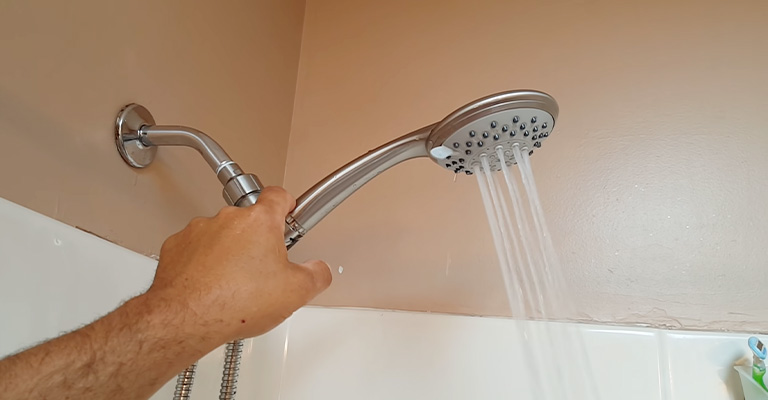
You can make your shower water hotter and longer by following some simple steps.
Change The Heating Element
It is possible to increase the temperature of your shower by changing its heating element. The heating element heats the water, so if you change it to a higher wattage, the water will be hotter.
You will need to determine what type of heating element you are using before you can make any conclusions.
When you use an electric heating element, you will have hotter water by increasing the wattage. When you have a gas heating element, increasing the wattage won’t make the water warmer.
Insulate The Pipes
Shower water can remain hot for longer when pipes are insulated. Water in the pipes stays hotter for longer when they have insulation since insulation prevents heat loss.
If you live in the winter, when the temperature is colder, you won’t be waiting around for a long time for the shower to begin to heat up.
Add Hot Water Tank Booster
A hot water tank booster can boost the shower water temperature, depending on the model. You can adjust some boosters to adjust the temperature, whereas others simply accelerate the heating process so that you don’t have to wait as long for hot water.
It’s important to remember, however, that a hot water tank booster cannot produce more hot water than your tank can hold. It is, therefore, unlikely that a booster will cause much of an increase in temperature if your tank is small.
Turn Up The Flow Control For Showerhead
You can adjust your showerhead’s flow control valve to your preferred temperature. A professional plumber will be needed to adjust the water pressure coming into your home if your showerhead does not have a flow control valve.
Alternatively, you could install a flow control valve on your shower head pipe. If you have basic plumbing skills, you can undertake this relatively simple project by yourself.
Upon installation, turn the valve to the desired setting and enjoy a hot shower.
Turn the Water Heater Up As High As Possible
Make sure the water heater is set as high as you can. There is a possibility that you will need to adjust the thermostat on a gas water heater.
Don’t forget to take precautions when adjusting the temperature on your water heater or in your shower, as they can be dangerous if not used correctly.
Use The Thermostat To Adjust The Temperature
The thermostat is instrumental in ensuring the hot water is at the right temperature. It should therefore be the first thing you do is to check if your shower does not heat up to the level you expect.
You should use a thermometer to see if the temperature of the water flowing is the same as that set on the thermostat. Consider testing and then possibly replacing the device, if necessary.
In addition, adjusting the thermostat may be necessary for cold winters, allowing the heater to raise the temperature from a much lower point.
Even so, if the piece is damaged, increasing the settings may not be of much benefit. To establish its integrity, the first step should be to verify it.
Maintenance
There are many reasons why rust and sediments may reduce your hot water tank’s temperature. To ensure your heating system is performing efficiently, make sure you check it biannually.
Aside from that, you can extend the life of your setup. Testing for and replacing faulty components is easy if you are handy with a hammer.
Rather than fiddling with the electrical and mechanical components, it is wise to check for cracks first. Cleaning the tank might not be beneficial if your water heating system is malfunctioning.
Final Words
Your current water heater may need to be replaced if it is over two decades old, especially if you notice your showers become barely warm. You can choose from various types of water heaters depending on your budget and needs.
Further, if you’re getting more people using the hot shower, it may be time to upgrade your heating system.
The water in some residential heaters can be stored, so if it runs out, you have to give it time to get more. A larger tank or a tankless option can ensure your perfect temperature.






